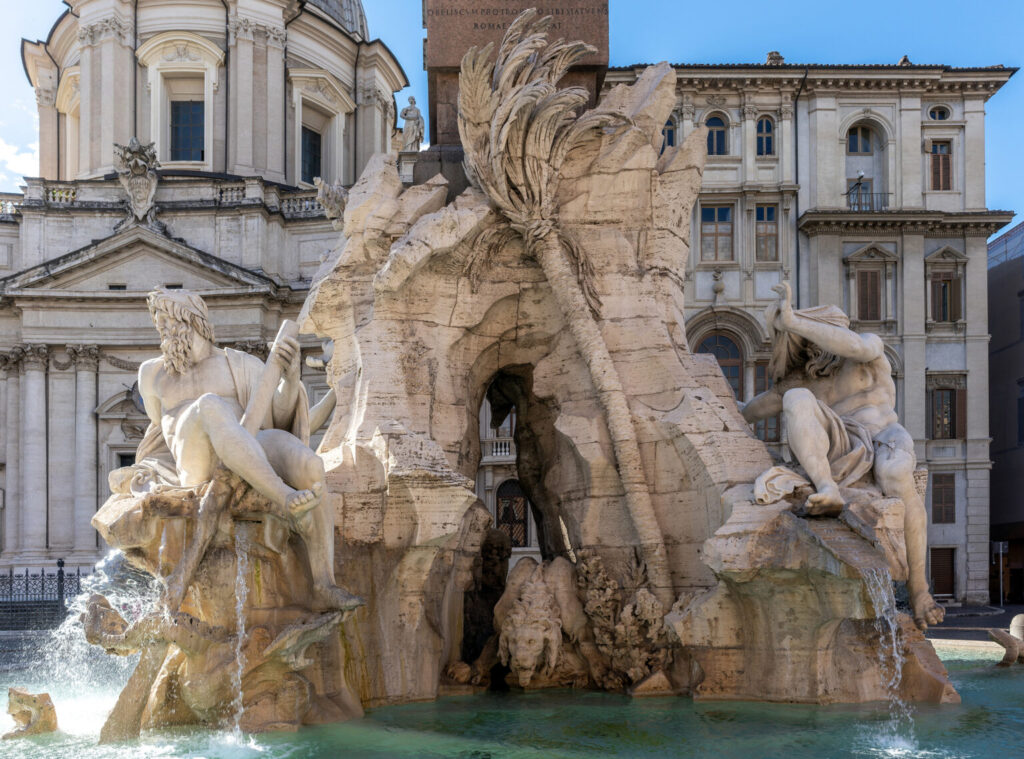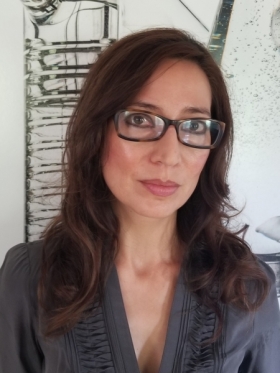AGAS Guest Lecture with Dr. Carolina Mangone
October 16th, 2025 at 5:30 pm

Travertine base (detail), Gian Lorenzo Bernini, Fountain of the Four Rivers (Fontana dei Quattro Fiumi), Piazza Navona, Rome, commission by Pope Innocent X, 1651, marble (photo: Steven Zucker, CC BY-NC-SA 2.0)
Date & Time
October 16th, 2025 at 5:30 pm
– October 16th, 2025 at 6:45 pm
Type of Event
Assoc. of Graduate Art Students Lectures
Lectures
Academic Area
Art History
Stony Ground: Sculpture, Architecture, and Travertine in Bernini’s Four River Fountain
The Association of Graduate Art Students will be hosting Dr. Carolina Mangone as the 2025 fall guest scholar. An expert in Bernini, Mangone is associate professor of art and archaeology at Princeton University. Mangone’s lecture is titled: “Stony Ground: Sculpture, Architecture, and Travertine in Bernini’s Four River Fountain”
Lecture Details
What does it mean for an artist to transform stone into stone? How do we understand mimesis that eliminates the difference between material and its representation? This lecture examines these questions through the lens of Gianlorenzo Bernini’s Four Rivers Fountain (1648-51), focusing on its rocky grotto base hewn from craggy, porous travertine made to look like the stone itself in its natural state. The stakes of this monument will be explored in relation to early modern natural philosophies about the formation of rocks and mountains; geological imaginaries about the origins for building; and the tradition of sculptor-architects. The interpretation of Bernini’s travertine base that emerges dissolves the boundaries of the natural, the sculptural, and the architectural and, in turn, gives new purchase on the non-finito in early modernity.
About the Lecturer

Carolina Mangone is a historian of Early Modern Art and Architecture. Her scholarship explores concepts and practices of imitating, copying, simulating, and faking; the materials and techniques of art and their movement across medial and professional boundaries; the traffic in art theoretical concepts across cultures and languages; modes of visualizing religious ideas and their histories; and the afterlives of early modern artists and architects in text and image.
Mangone’s first book, Bernini’s Michelangelo (Yale, 2020), examines the contestedness of canonicity in its early modern foundations by studying how Gianlorenzo Bernini constructed an artistic theory through imitating the art and architecture of Michelangelo Buonarroti. This study both resituates Michelangelo’s legacy to a constitutive, if fraught, place in Roman artistic theory and practice and demonstrates how Bernini approached this legacy as a surprisingly flexible repertory of precepts and forms that he reconciled—with daring license and creative restraint—to the changed aesthetic, sacred, and theoretical imperatives of his era. Mangone is also the co-editor, with Evonne Levy, of Material Bernini (Ashgate, 2016) a collaboration that constitutes the first study of Bernini’s sculptural production—in clay, marble, bronze, and on paper—from material and intermedial perspectives.
Prior to joining the Department of Art & Archeology at Princeton University in 2015, Mangone was a Mellon Postdoctoral Fellow and Lecturer in the Department of Art and Archaeology at Columbia University. Her research has been supported by the Social Sciences and Humanities Research Council of Canada, the Italian Ministry of Foreign Affairs, the Canadian Center for Architecture in Montreal, the National Gallery of Art in Washington D.C., the School of Historical Studies at the Institute for Advanced Study in Princeton, and the Center for Advanced Study in the Visual Arts in Washington D.C. She is currently a Behrman Faculty Fellow in the Humanities Council at Princeton University (2022-24) and Director of the Program in Italian Studies (2023-27).





